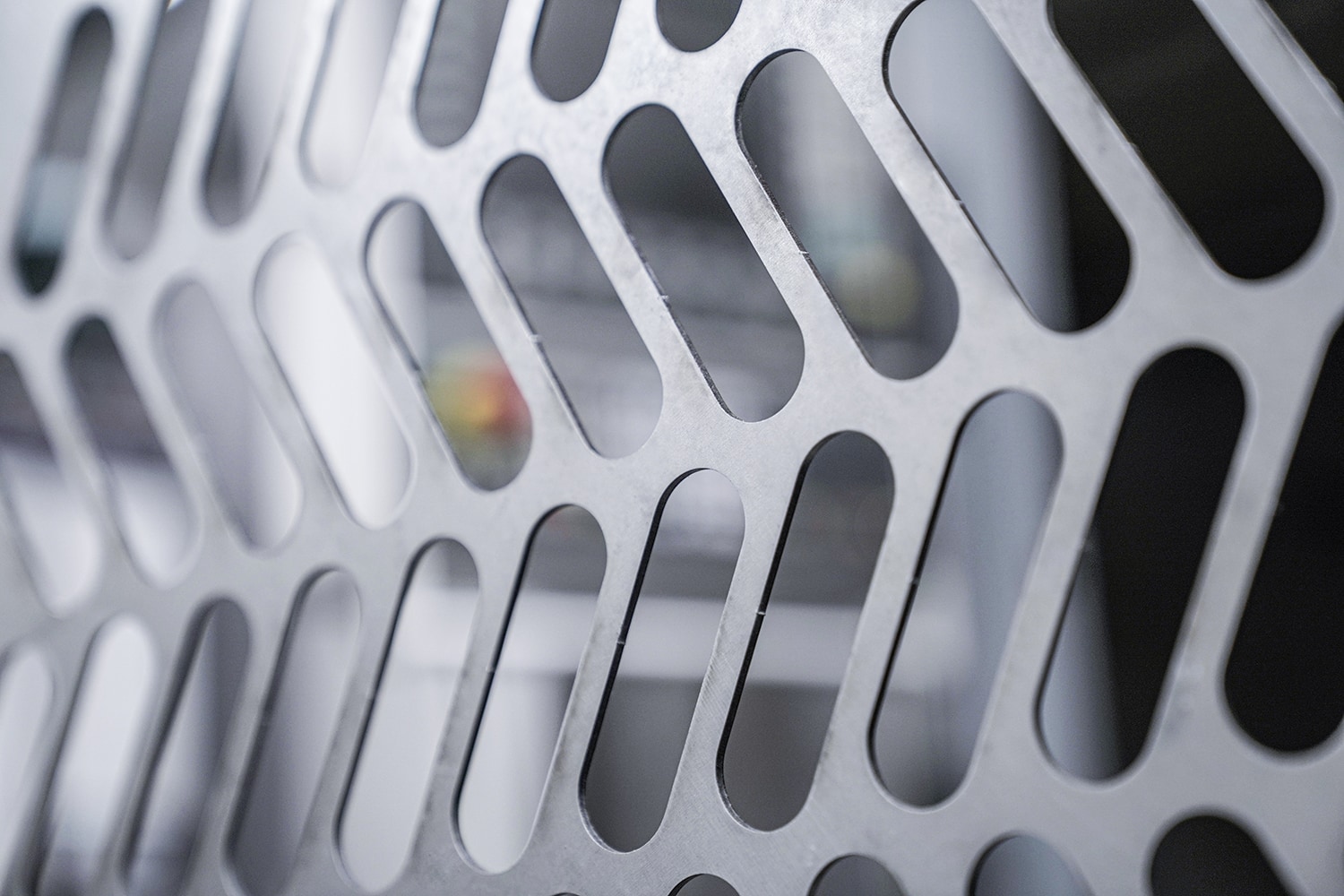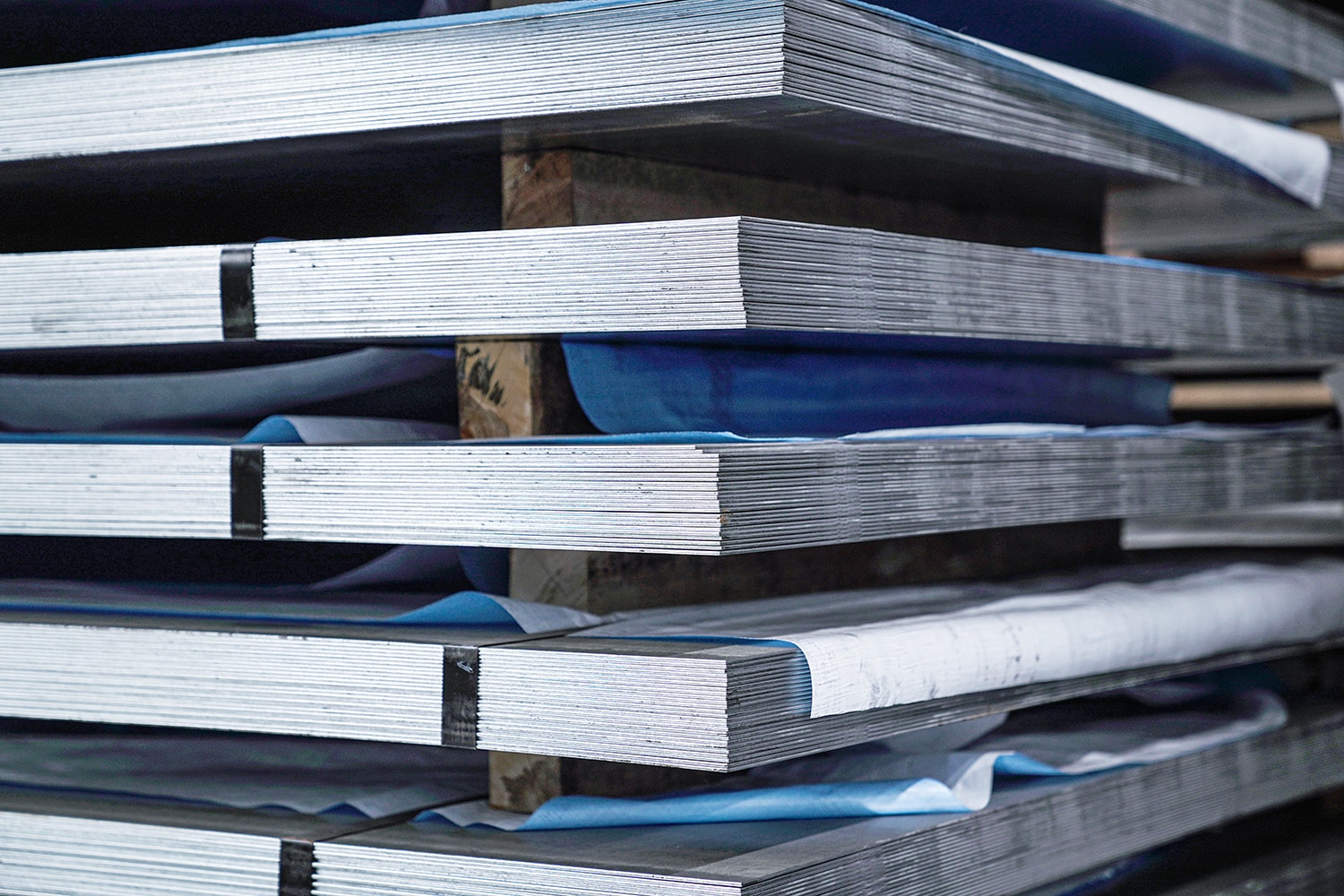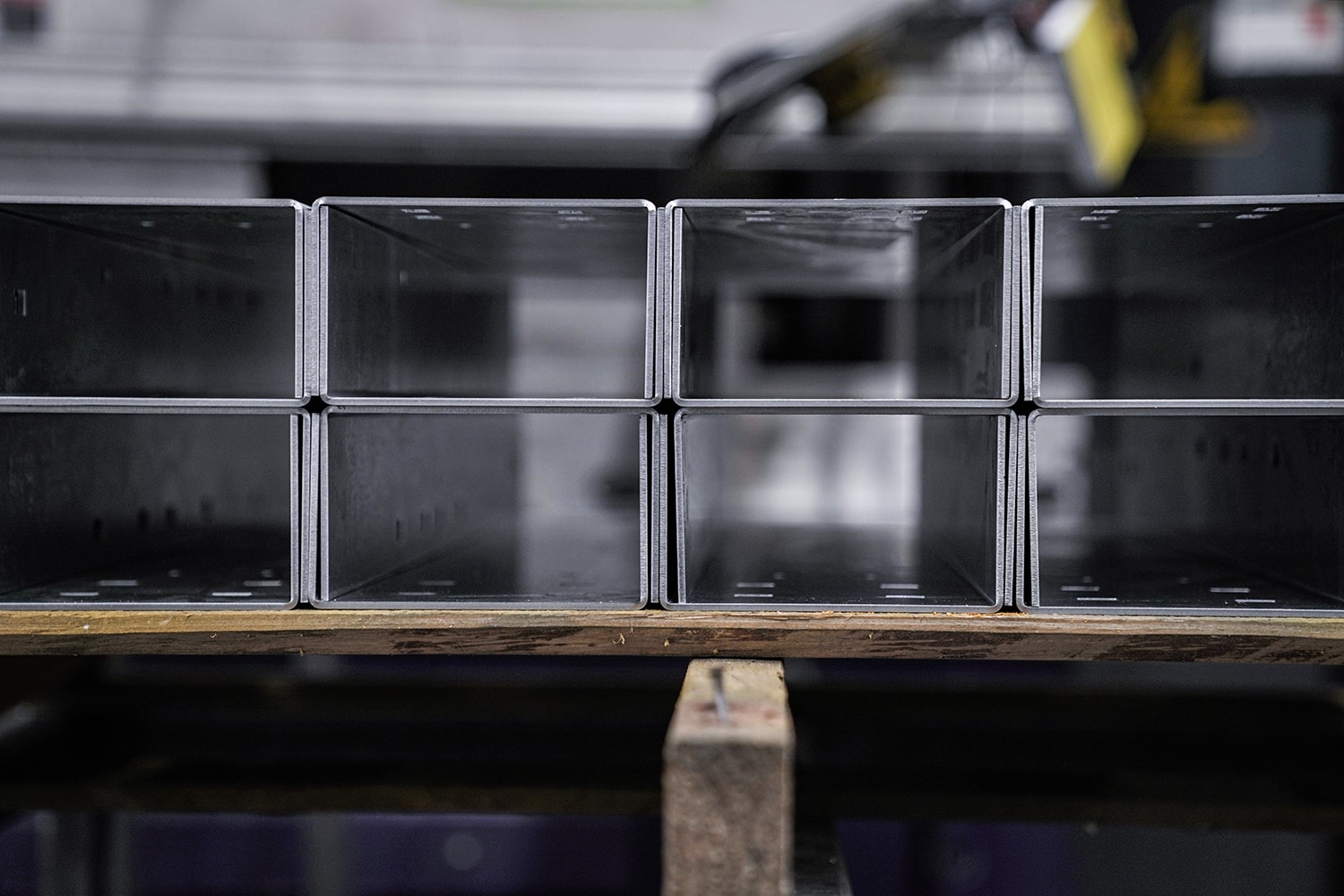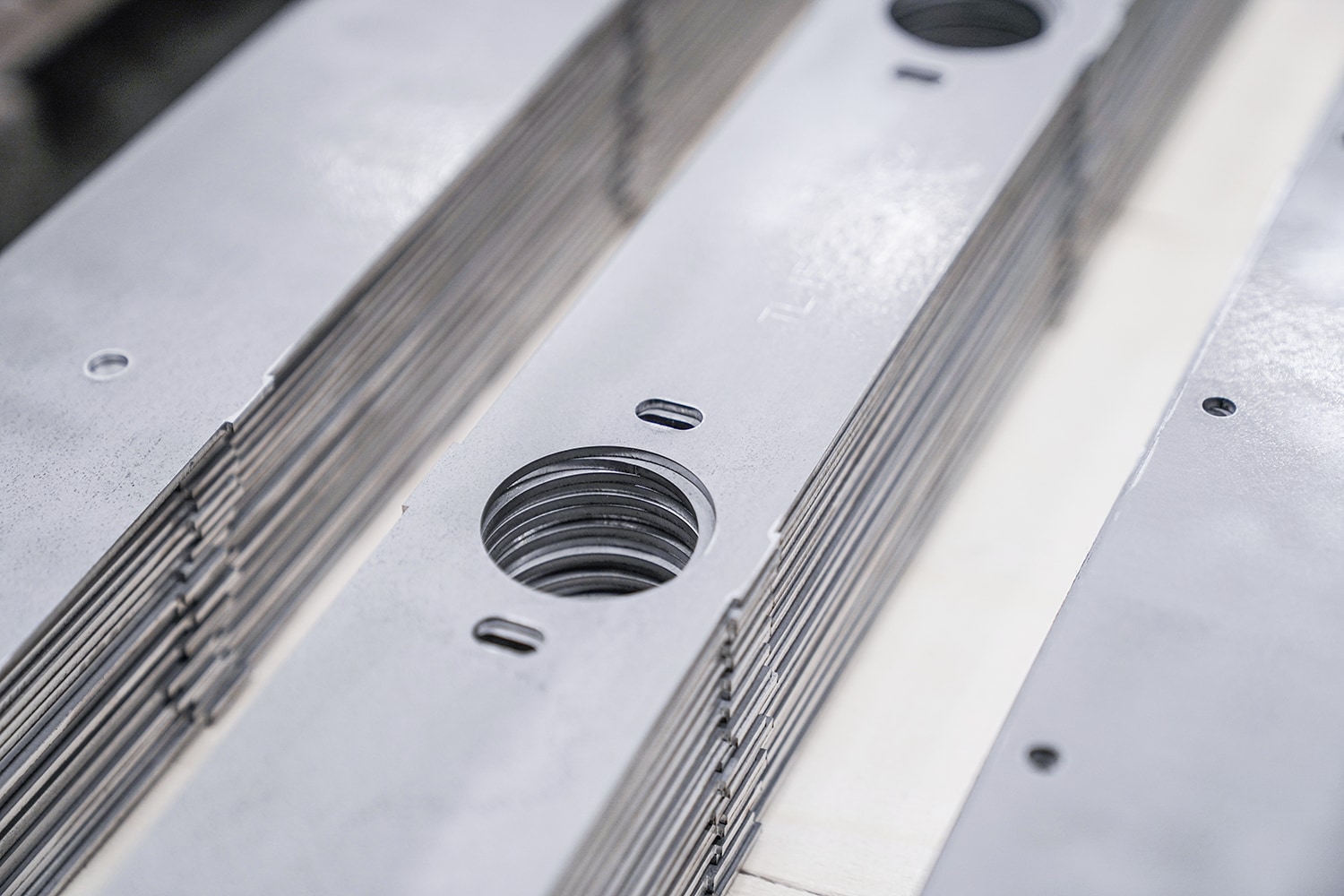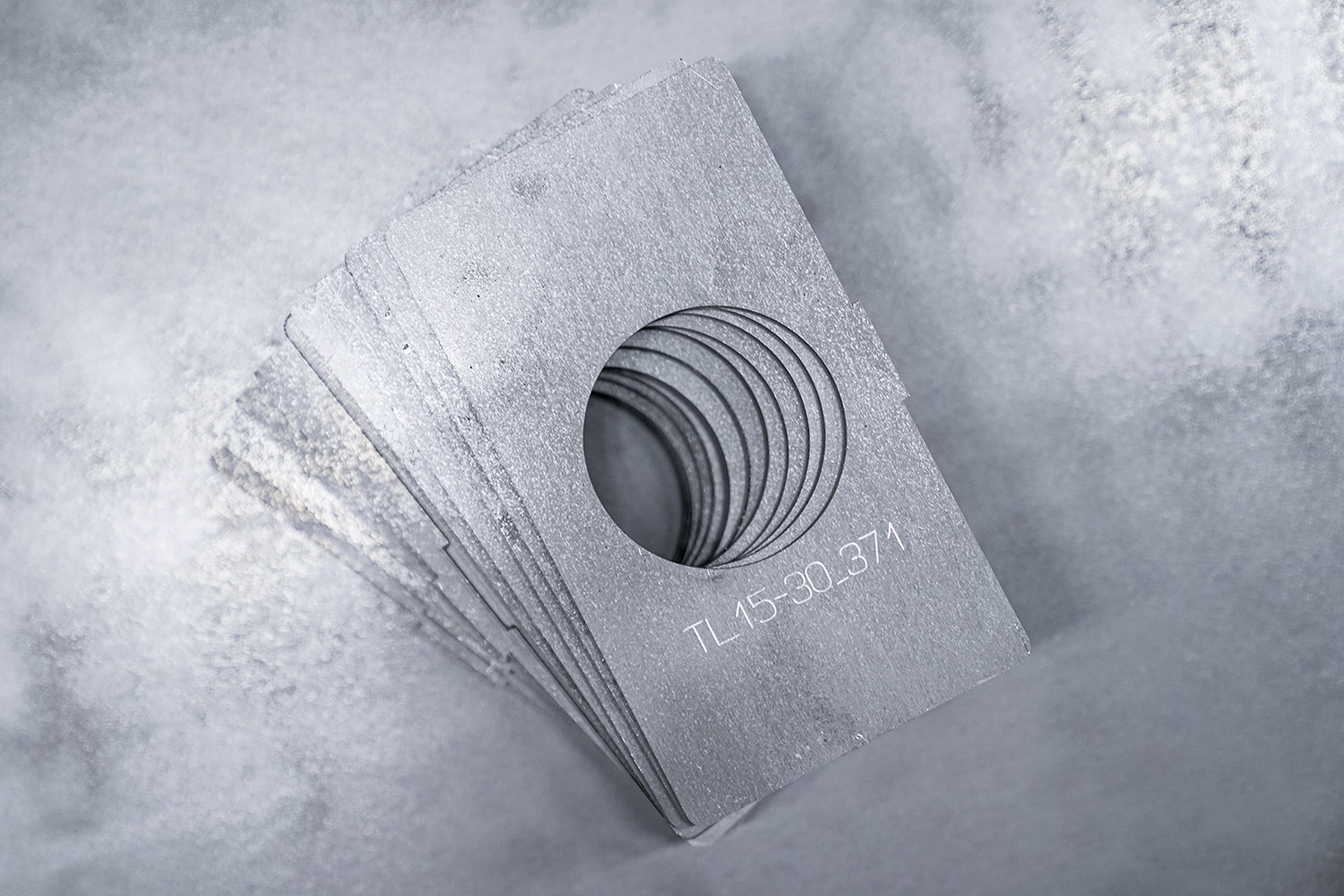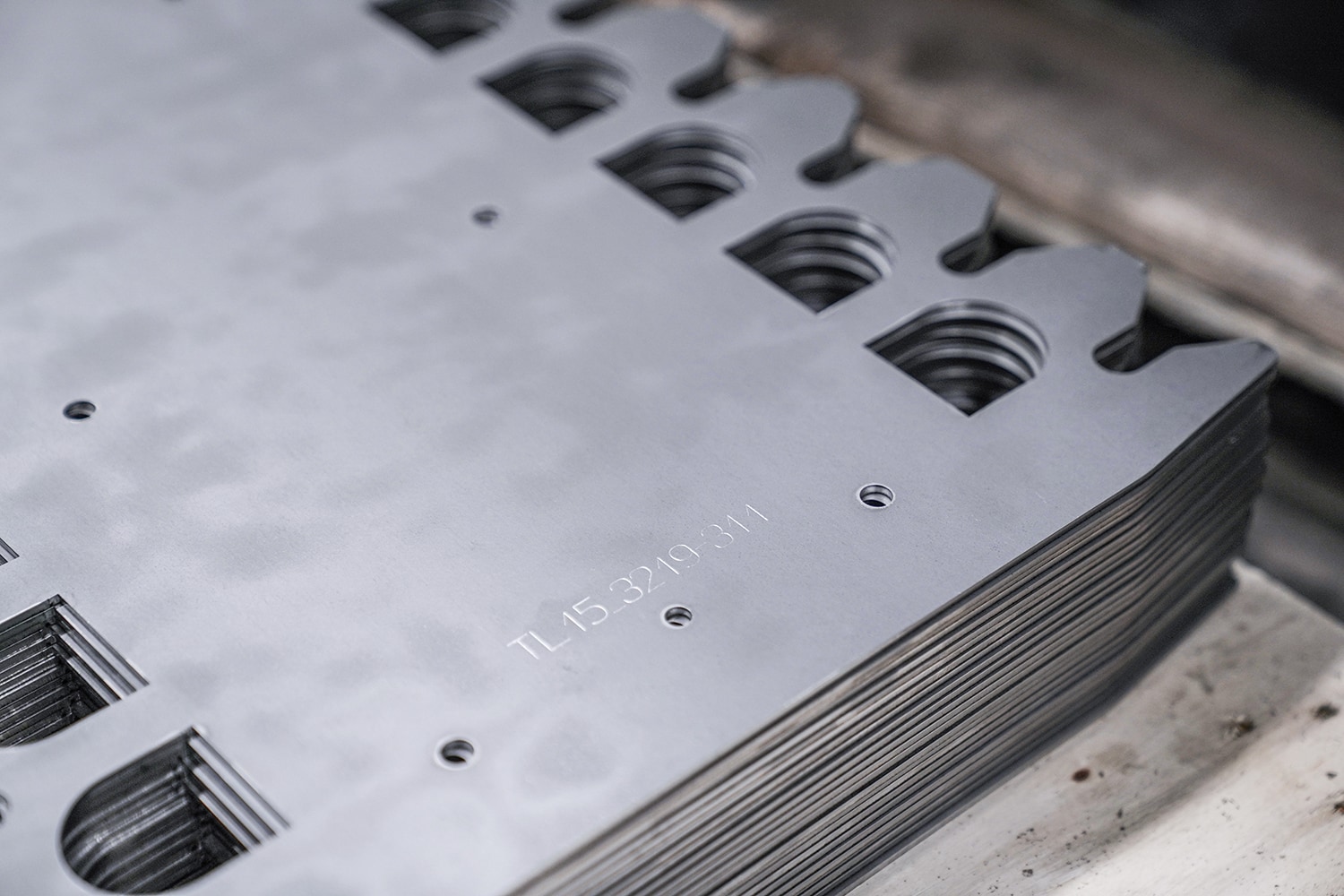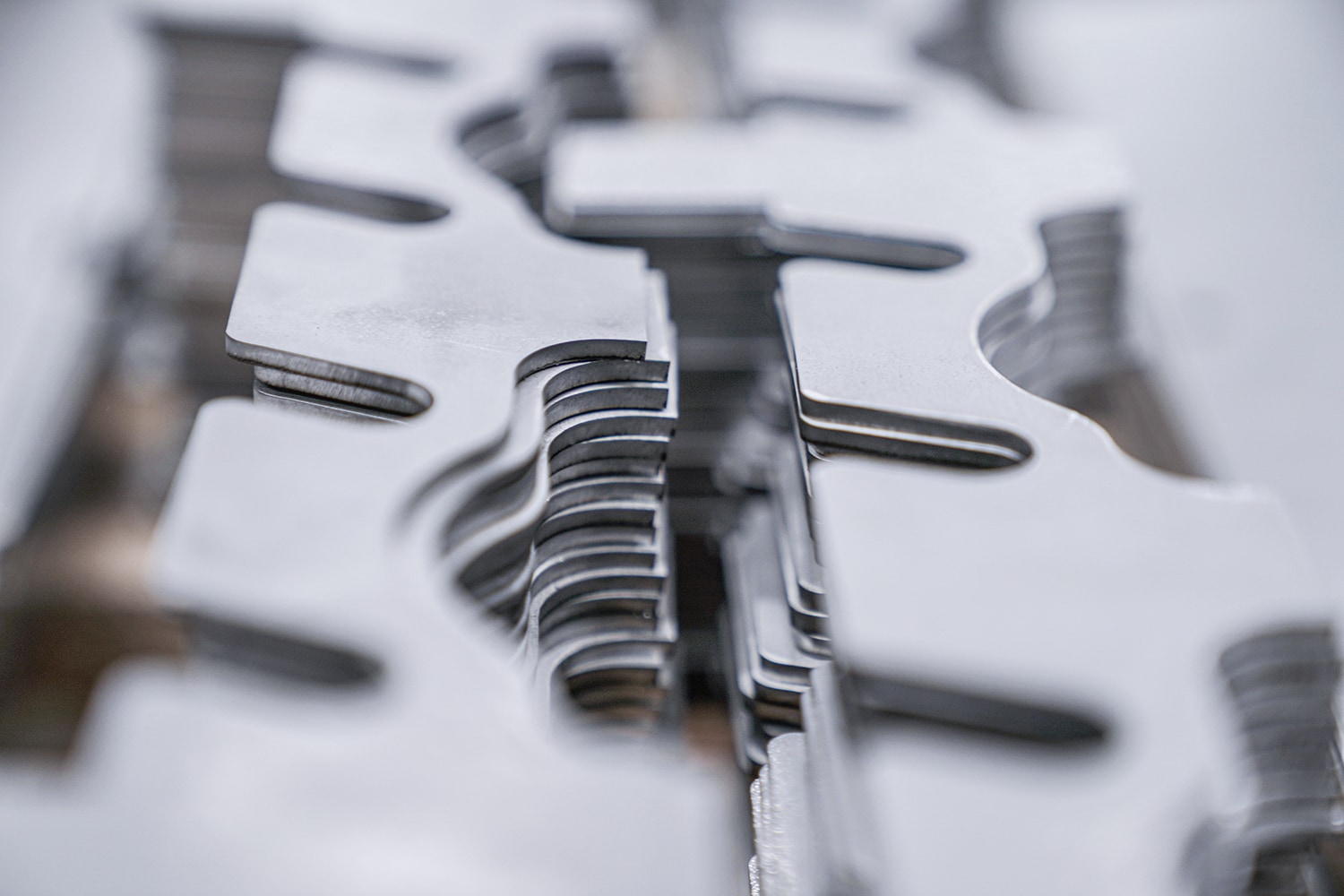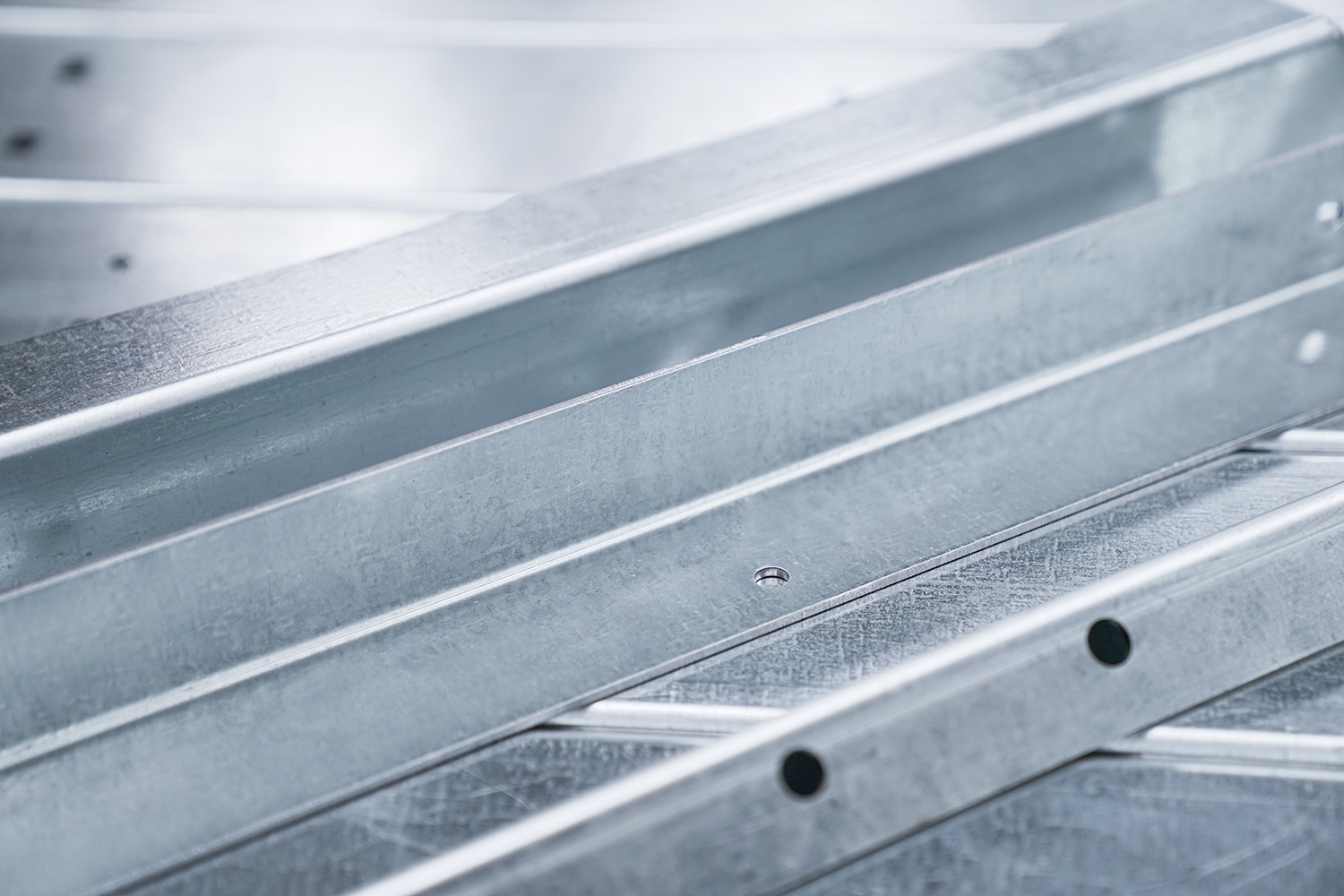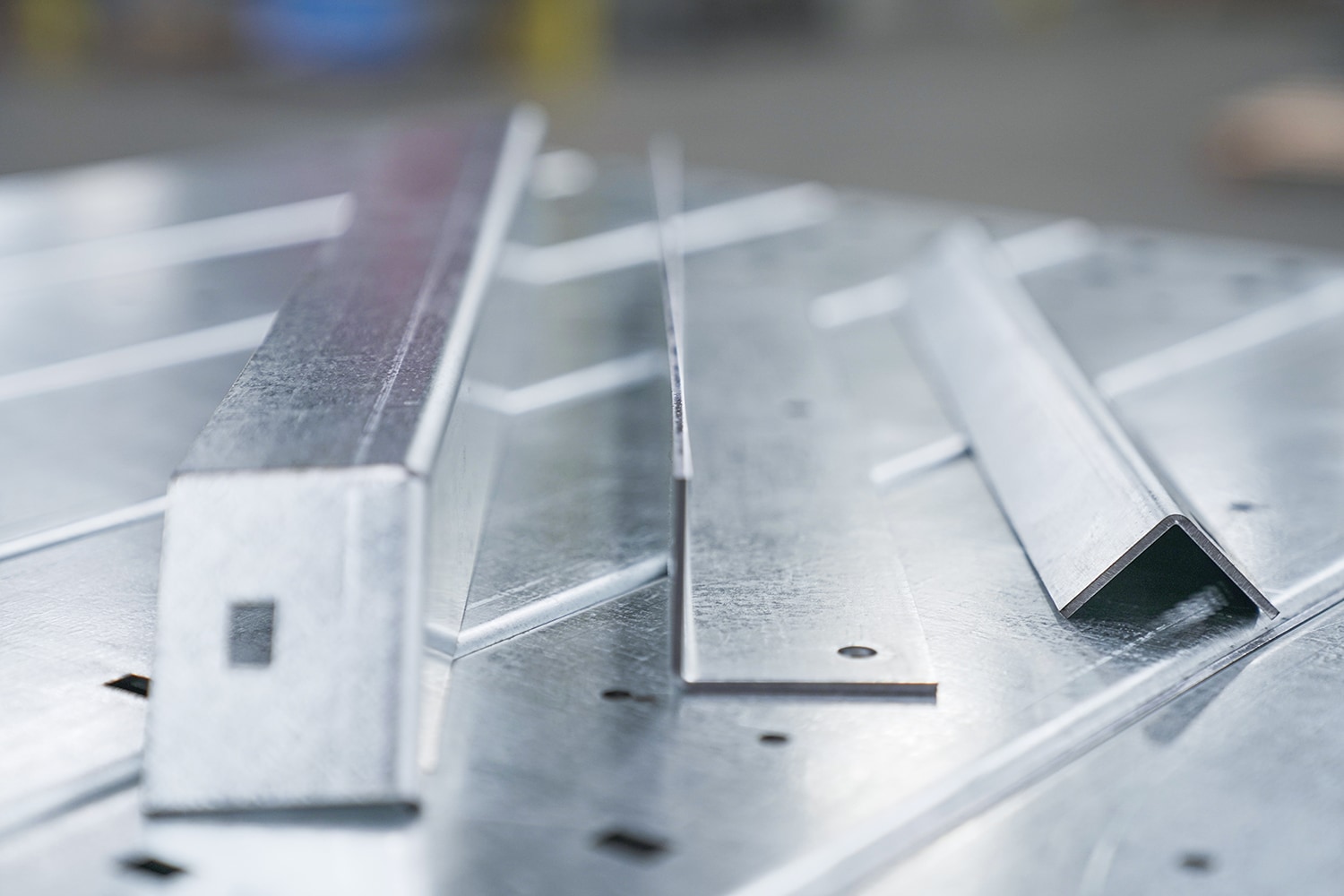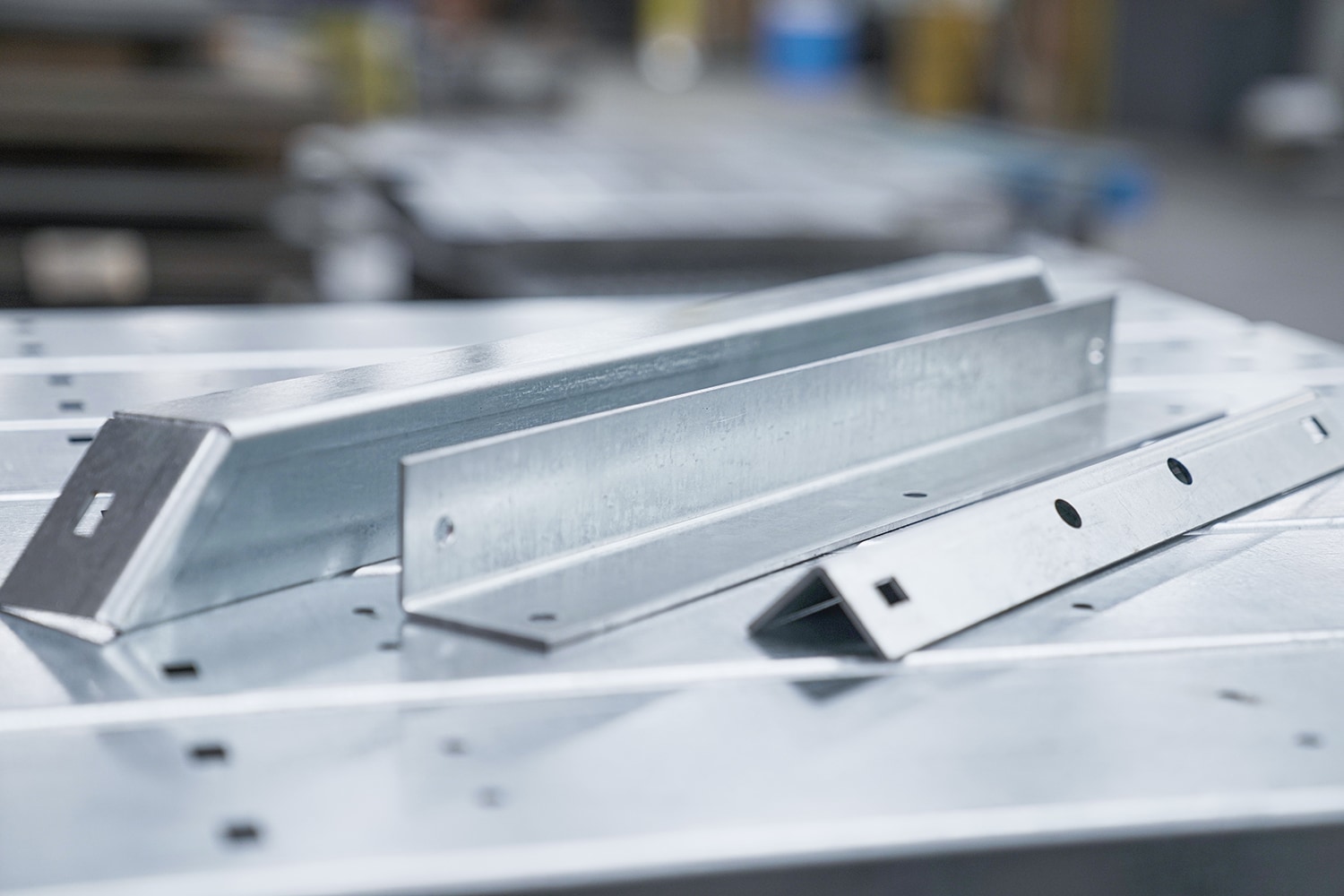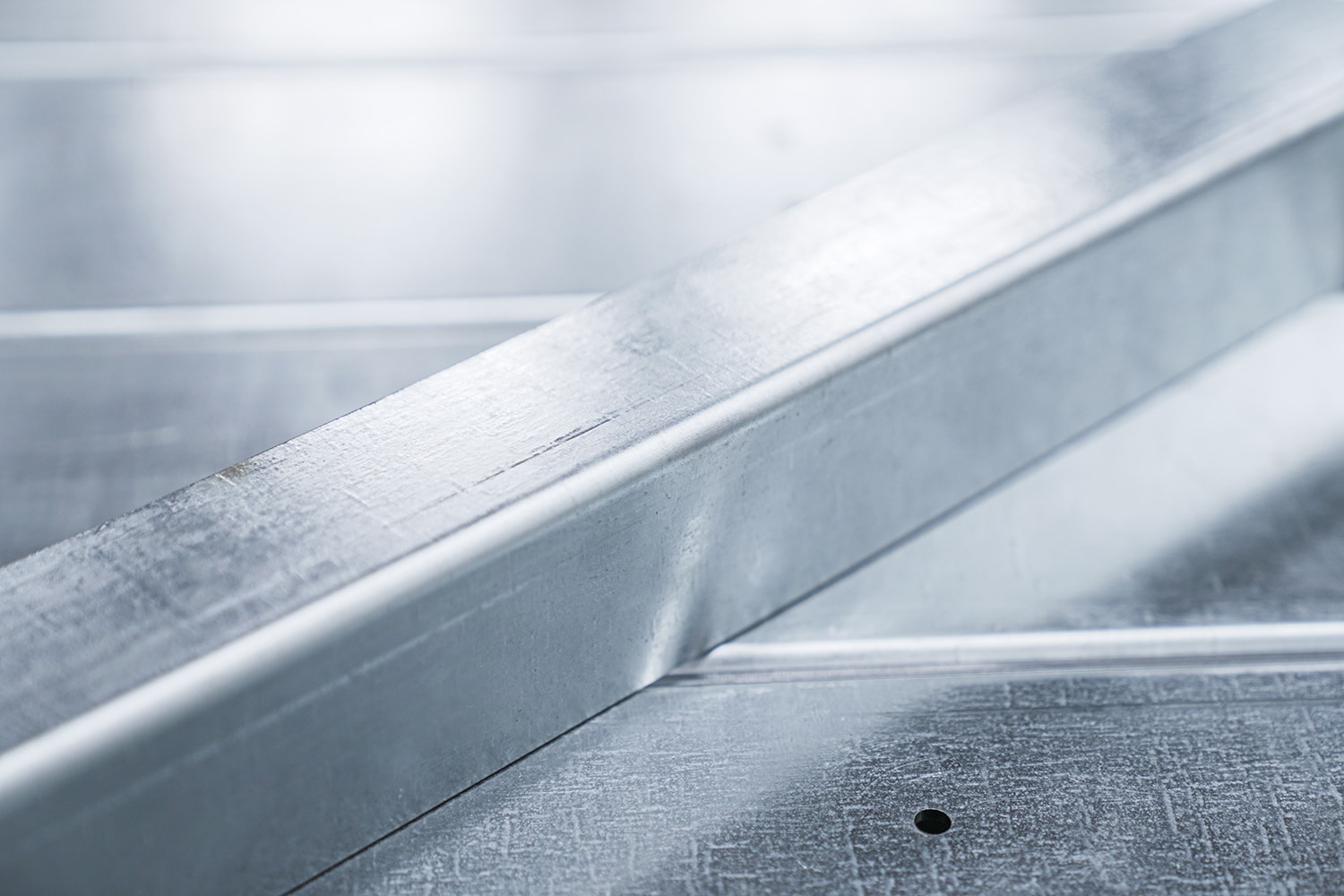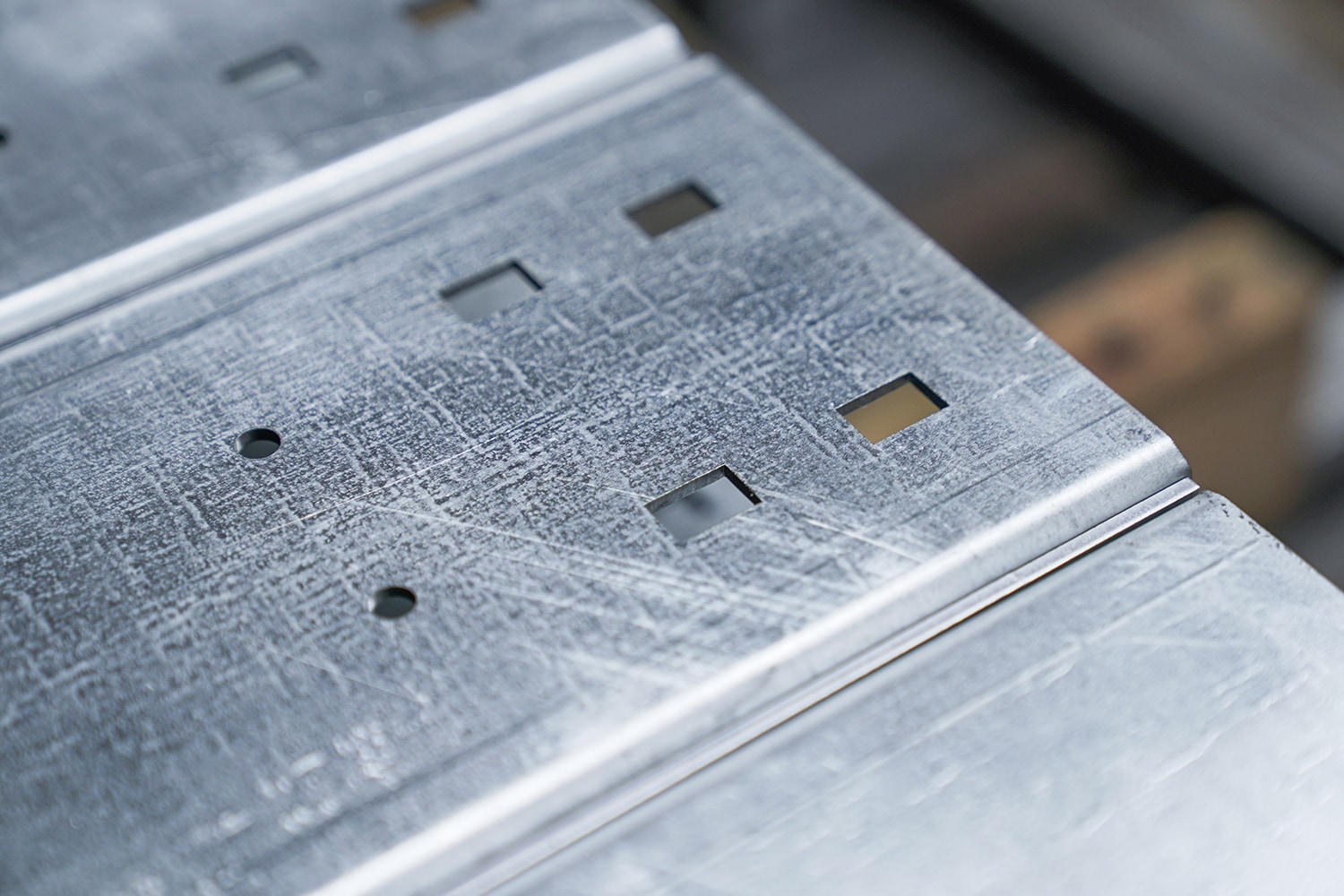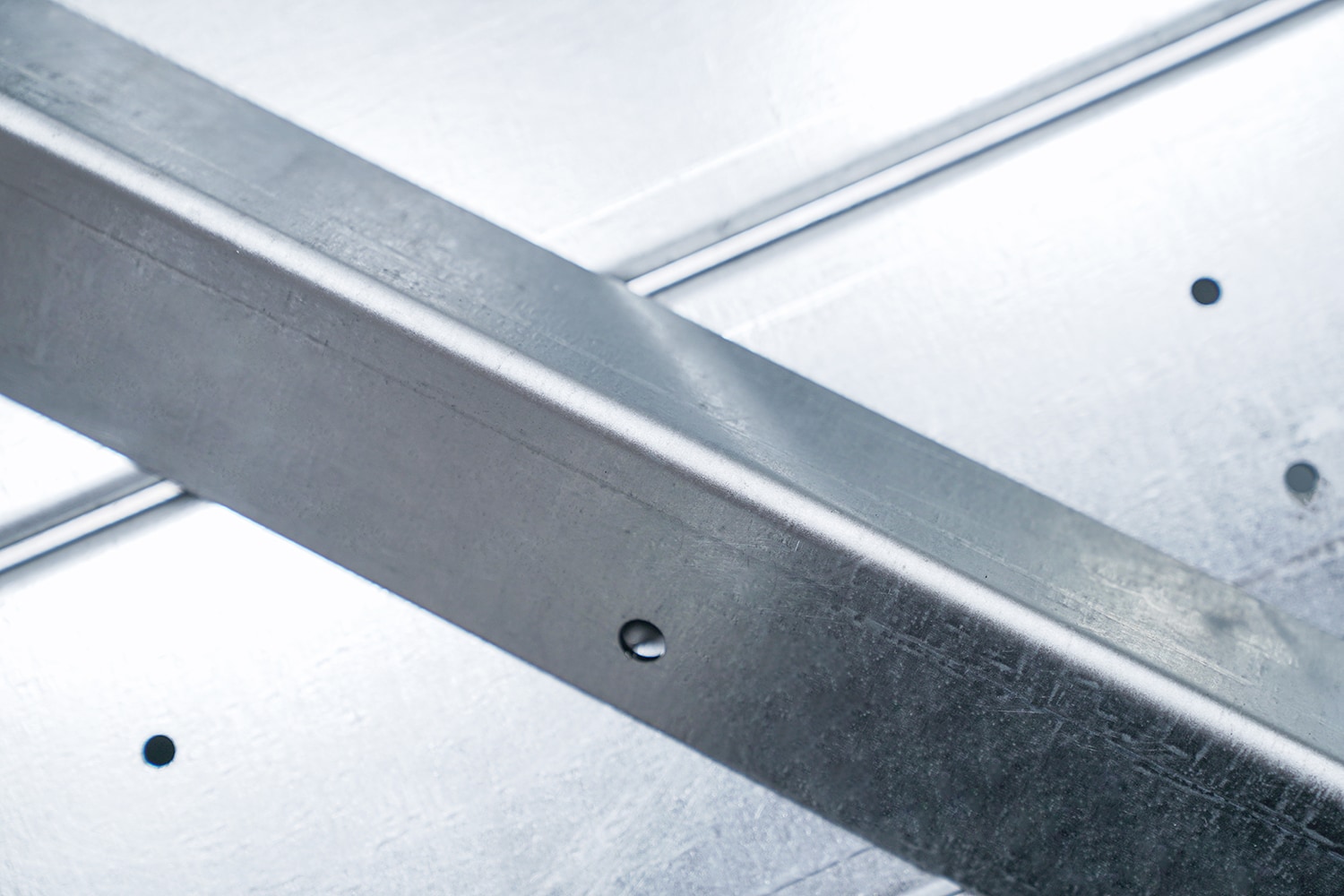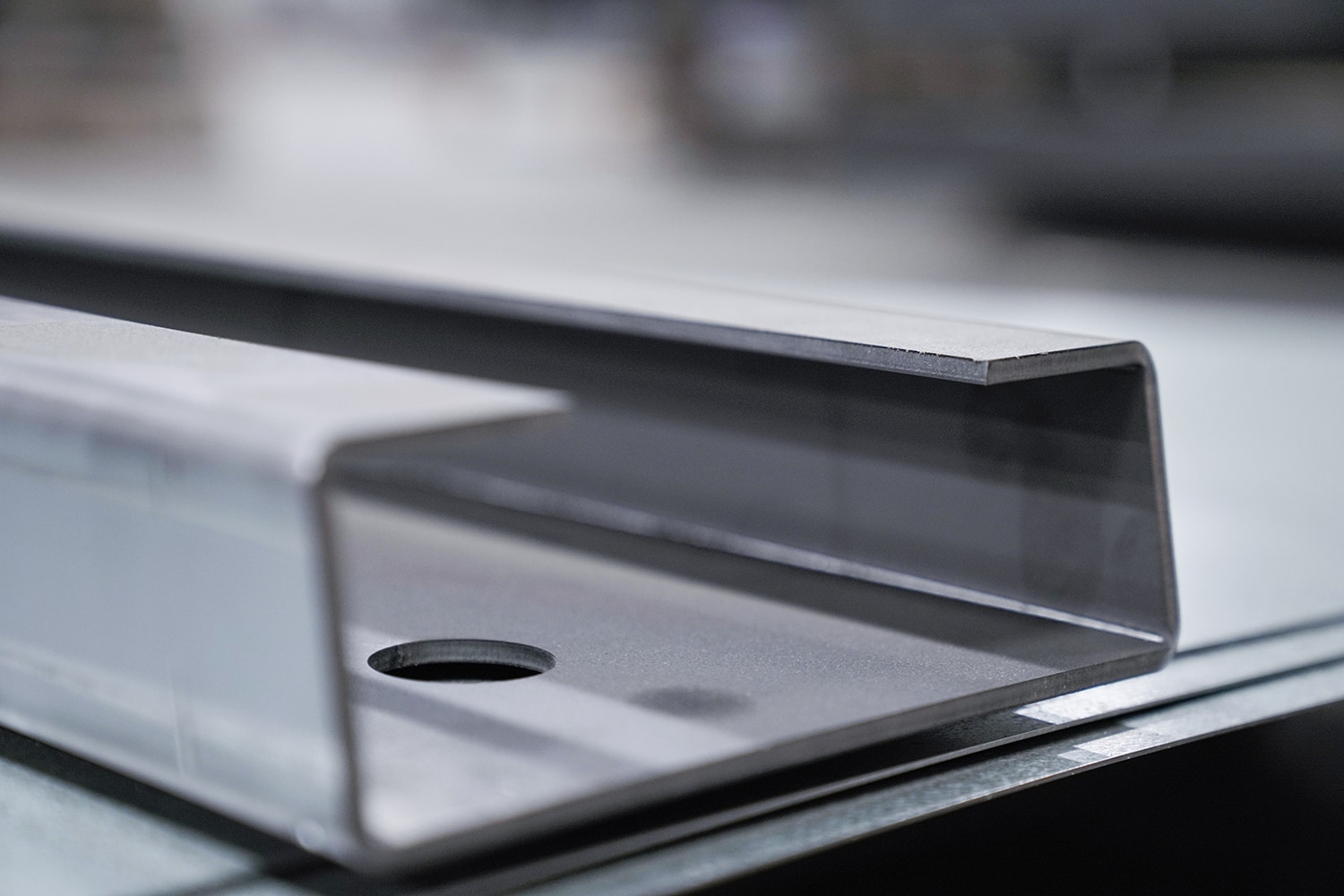Sheet Metal Engineering
Sheet metal engineering is the planning stage of modifying flat metal sheets (usually made of iron, aluminum, or stainless steel) by forming, cutting, or bending them into a particular shape or structure. The engineers program specialized machinery to fabricate sheet metal and turn it into something meaningful. The discipline is widely used in heavy industries where metal is the major element.
Special tools, such as CNC laser machinery is also used in the sheet metal fabrication process. This method ensures precise cutting throughout the process.
Our Capabilities:
| Metal | Max Thickness in Inches |
| Aluminum | 1.125 |
| Brass | 0.625 |
| Copper | 0.625 |
| Galvanized Steel | 0.187 |
| Stainless Steel / Nirosta | 1.125 |
| HR (hot roll steel) | 1.125 |
- Sheet Size – 78” x 157”
- Cutting Tolerance – +/- .002”
Service Area Coverage:
Metaline metal fab shop is located in Toronto, at the heart of Canada’s largest business cluster, and minutes drive from YYZ – busiest Canadian airport. We serve customers from all industries in Ontario and across Canada. We also deliver orders and projects in the USA – we are easy to reach within less than 2 hours drive from New York state border.
Step 1 - Project Submission
Our engineers will work with you directly in order to fully understand your requirements as well as provide options regarding materials, finishes and other specifics. It’s our goal to establish a long-lasting relationship with all of our customers and we recognize that this initial step is crucial in setting the trajectory for the entire project.
Step 2 - Drawing Submission
We will take the submitted specification and prepare pre-production drawings/models/blueprints which we will submit to you for approval. Any changes that need to be performed can be done so at this stage and we’ll ensure that they are made in accordance with the original specifications.
Step 3 - Fabrication
During this stage, we will fabricate your products based on the approved specification, guidelines and timeframes. You will always know exactly what stage your project is in.
Step 4 - Quality Control
Our QC team will inspect the finished materials for defects and ensure that the everything was completed to the original specifications.
Step 5 - Delivery
Optionally, we offer delivery services as well for projects of any size and can ship your fabricated materials via ground, sea or air to any major worldwide destination.
Sheet Metal Fabrication
Sheet metal fabrication is the process by which metal sheets are transformed into required form and structure. CNC operators cut, fold, bend or form metal sheets by using press brakes or laser cutting machines. In some cases, chop saws, band saws and cutting torches are also used but these instruments are mainly restricted to the small-scale industry.
Today metal fabrication utilizes programmable CNC machines and production process had made work easy, precise, and fast.
Perforated Steel
A plain metal sheet that has been punched or stamped using specialized tools is called perforated metal. The process is used to enhance noise suppression and improve protection against breaking. Or sometimes perforation can be used to enhance metal sheet appearance when used for interior or exterior design elements.
For best results and precision of metal perforation (especially stainless steel), such process should only be performed by heavy CNC machinery in specialized shops.
Did you know?
Metaline has recently purchased and installed a 2021 Bystronic Export 12KW Laser at our Toronto facility. The new machine is able to handle 78″ by 157″ sheets on top of our previously purchased machine, that handles 60” X 120” sheets. This increased productivity allows us to meet all of your J.I.T requirements.
Request an Estimate
No matter what size or complicity your sheet metal fabrication project, we are here to assist you. Contact us today via phone or email, share your requirements, and our engineers would be happy to provide detailed quote for your project.
FAQs
Metal sheet fabrication is the process of turning sheet metal into metal structures. The manufacturing process includes bending, cutting, stretching, assembling, and folding to achieve the desired shape.
- Cutting is the first step of the sheet metal fabrication process, which depends on the metal used. The methods used are laser cutting, waterjet cutting, shearing, mechanical cutting, and punching.
- Forming refers to the process of shaping the metal.
- Joining is the final phase that binds the elements to create a final product.
- Metal stamping is used to shape metal sheets into custom designs.
- Welding refers to a method of joining two metals using heat and pressure.
- Extrusion is pushing a hot or cold metal into a die.
Sheet metal machining refers to crafting parts and final products from metal sheets. Different processes are applied to manipulate the metal sheet into structures such as cutting, shaping, and joining.
Sheet metal machining is the process of using a wide range of techniques to shape the metal sheets into products. Some of the most common techniques are cutting, shaping, welding, and joining.
The most commonly used metals for sheet fabrication are:
- Steel
- Stainless steel
- Carbon steel
- Copper
- Aluminum
- Brass
Stainless steel is a popular choice for sheet metal forming. The durability and rust-resistant properties make this alloy popular within a wide range of industries. In addition, copper, aluminum, and brass are popular alternatives.
- Alloy steel includes other elements such as vanadium nickel to prevent corrosion or increase strength.
- Stainless steel contains chromium to guarantee protection from rust.
- Carbon steel includes iron and carbon to strengthen the properties of this metal.
Sheet metal fabrication finds its implementation across various industries such as construction, electronics, computer, automotive, transportation, aerospace, oil and gas, medical and pharmaceutical, military, and others. The fabricated sheet metal helps create metal structures from sheets using various methods such as cutting, shaping, welding, and joining.
- Cutting is completed with different laser cutting, plasma, or CNC router methods.
- Forming will reshape the material into the desired design. Bending is shaping the metal using press brakes or a hammer.
- Welding is the process of joining two metal pieces.
- Finishing refers to adding a protective coating once the product is finished. The goal is to improve the look, enhance durability, prevent corrosion, or control friction.
